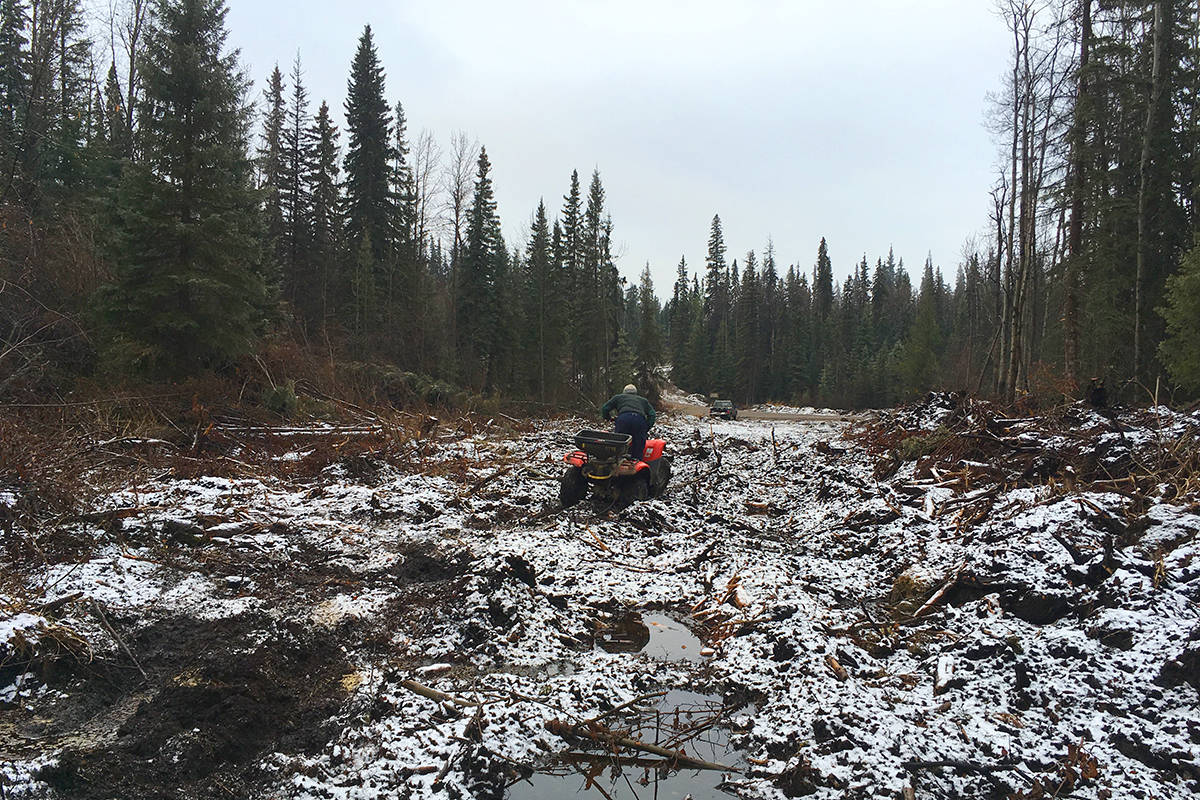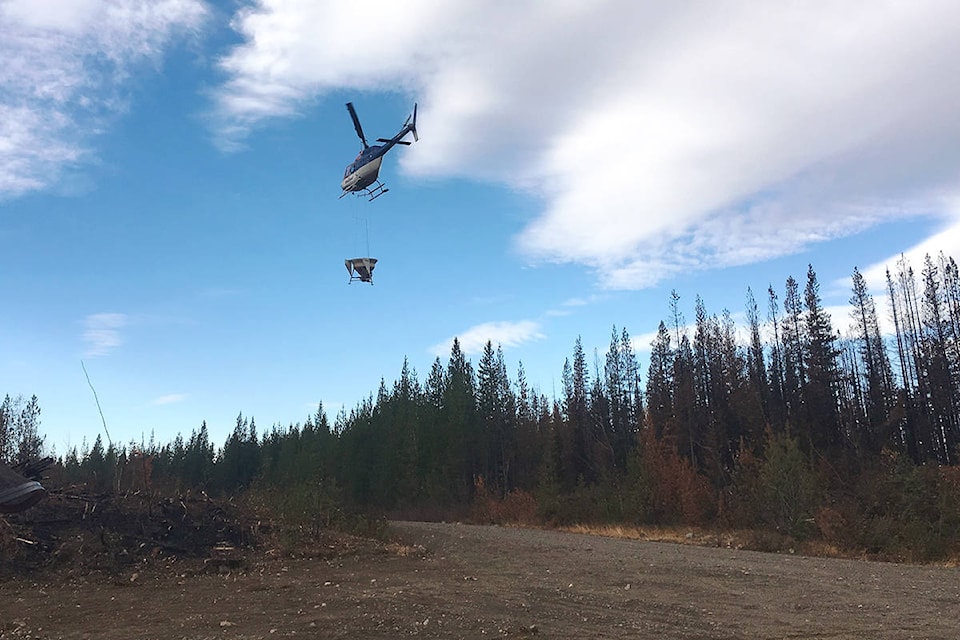The rehabilitation of the land affected by the suppression of the 2018 wildfires is now underway throughout the Northwest.
The Northwest Fire Centre, located in Smithers, coordinates the wildfire response in the area and will be working to restore 12 of the most significant fire sites covering 383,230 hectares — a process that is expected to take several months.
Following the fires in the latter half of 2018, the centre worked to remove danger trees, restore natural drainage patterns, and grass seeded fireguards (a machine-made clearing to serve as a fire break) to prevent invasive plants and soil erosion. As the first phase of the rehabilitation work must be done before the onset of winter, it’s considered an essential step for public safety and environmental protection.
“Weather was an issue before the ground froze,” writes Michelle Larstone, spokesperson for the Skeena Region, Wildfire Rehab and Recovery Team, in an email to the Terrace Standard. As an example, she says that land in some areas was too soft to use heavy pieces of machinery on.
READ MORE: Emergency Support Services examines strategies after 2018 wildfires
The Cassiar Fire Zone, which has been affected by the Alkali Lake and Lutz Creek wildfires, is in the greatest need for rehabilitation. A total of 221,994 hectares has been affected.
“All emergency works within the community (in the Cassiar Fire Zone) had to be complete before residents could come back to their community. The focus now is on rehabilitating the areas impacted by fire suppression activities. Archaeological assessments and rehabilitation work, such as repairing fireguard and grass seeding, will be moving ahead once the snow clears.”
The 121,215-hectare Alkali Lake wildfire, which originated five kilometres northwest of Telegraph Creek, requires approximately 57 kilometres of fireguard to be rebuilt whereas the 100,779-hectare Lutz Creek wildfire only needs seven kilometres of it.
The ministry is working with the Tahltan Nation and the Tahltan Nation Development Corporation to complete this work, which is expected to be complete come spring.
READ MORE: California wildfire costliest natural disaster in 2018
Now that the second phase of the rehabilitation work is in progress, the B.C. government in collaboration with the region’s local governments and First Nations, will also be stabilizing slopes next to highways and bodies of water, clearing away unstable trees, seeding more grass and removing timber that was cut down to slow the growth of the wildfires.
But according to Larstone, that planning phase can take some time.
“It requires data analysis, field inspections, report writing, and archeological assessments in collaboration with affected First Nations.”
As for tree-planting, that won’t be considered until the next phase after. Plans will help determine which sites need to be replanted and which can be left to natural regeneration.
In Dec. 2018, the Ministry of Forests, Lands, Natural Resource Operations and Rural Developments released a press statement that highlighted the rehabilitation needs of the 12 different zones in the Northwest Fire Centre that are in progress or in revision. Planning for an additional two sites in the Northwest Fire Centre region will begin this year.
The Northwest Fire Centre’s region covers over 25 million hectares, a quarter of the province, stretching from the west coast to just west of Endako, from the Yukon border to Tweedsmuir Provincial Park.
Larstone says that the overall cost will be determined once all the rehabilitation plans for each fire are approved.
“To date, the recovery process has been going well, and once snow clears we’ll be ramping up activities again,” says Larstone. “We’ll continue to keep communities and stakeholders informed as we progress.”
natalia@terracestandard.com
Like us on Facebook and follow us on Twitter

